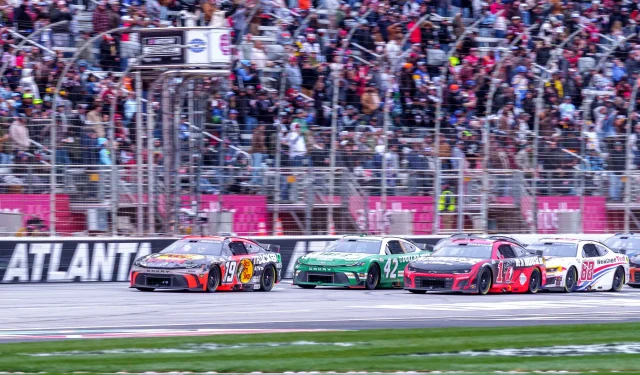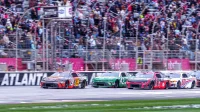Understanding the Importance of Drafting in NASCAR
NASCAR racing heavily relies on the concept of drafting, a strategic maneuver that enhances speed and efficiency. By closely following another vehicle, drivers can mitigate air resistance, allowing them to achieve higher velocities. This technique is particularly vital on superspeedways, such as Daytona International Speedway, Talladega Superspeedway, and Atlanta Motor Speedway, where large groups of cars often engage in drafting to maximize their racing potential.
The Mechanics of Drag and Aerodynamics
To fully grasp the mechanics of drafting, it’s essential to recognize the role of drag. Drag is the aerodynamic force that acts in opposition to a car’s motion, effectively slowing it down due to air resistance. Advanced engineering techniques are employed to design the stock cars in NASCAR with aerodynamic efficiency in mind, significantly reducing drag but never completely eliminating it.
The Slipstream Effect
As a race car moves forward, it displaces air, creating a low-pressure zone behind it, known as the slipstream. This zone essentially acts as a vacuum that can draw a trailing vehicle closer, allowing it to gain speed with substantially less effort. The trailing car enjoys reduced air resistance, enabling it to maintain pace more effectively, which benefits both vehicles involved in drafting.
Teamwork and Strategy in Drafting
Effective drafting requires coordination between drivers. The lead car bears the bulk of the air resistance, while the trailing car can gain momentum with reduced effort. Additionally, tactics such as bump drafting—where the trailing car lightly nudges the lead car—can propel both vehicles even faster. However, this strategy must be executed with caution, as excessive force can lead to loss of control for the lead car.
A Historic Moment for Drafting
The drafting technique was first popularized by Junior Johnson in 1959 during a race at Daytona. Noticing his slower Chevrolet could keep up better by staying behind faster Pontiacs, Johnson conserved power by riding in their slipstream. This ultimately allowed him to maintain a competitive speed while his rivals slowed down, leading to his race victory. This moment marked a turning point, proving drafting’s potential to alter the dynamics of stock car racing. Johnson famously remarked on the skills required for effective drafting, stating:
“I don’t think a lot of these guys are really good in the draft. There’s a lot of skill to it.”
The Legalities of Drafting in NASCAR
While traditional drafting is permitted in NASCAR, tandem drafting—where two cars maintain constant physical contact—was banned following a dangerous incident at Daytona in 2013. During that race, Kyle Larson’s car was involved in a severe crash that sent debris into the stands, resulting in injuries to spectators, prompting NASCAR to reconsider this strategy.
Dodge: A Potential Comeback to NASCAR
In recent news, Dodge is reportedly planning a return to NASCAR, specifically through the Craftsman Truck Series, after departing from competition in 2016. Sources from The Athletic indicate that Dodge aims to re-enter the NASCAR fold under its Ram brand by 2026.
Market Trends and Manufacturer Dynamics
For years, there have been speculations about new manufacturers joining the NASCAR circuit, with Honda frequently cited as a possibility. However, Honda has publicly stated its disinterest in NASCAR as long as the series remains committed to V8 engines. In contrast, Dodge seems poised to embrace the current landscape and is preparing for a strategic return, reminiscent of Toyota’s initial entry through the Truck Series in 2004 before advancing to the Cup Series by 2007.
Dodge’s Legacy in NASCAR
Dodge’s legacy in NASCAR is illustrious, beginning with Lee Petty’s triumph in 1953, which marked the manufacturer’s first NASCAR victory. Dodge subsequently secured its initial Cup Series championship in 1954 and introduced the powerful 426 Hemi engine in the 1960s. However, the engine’s success led to its ban, contributing to Dodge’s exit from the sport.
The manufacturer made a notable return in 2001, spearheaded by Bill Elliott, and reclaimed prominence when Brad Keselowski clinched the Cup Series championship in 2012 driving a Dodge. Unfortunately, Dodge’s absence ensued when Penske Racing transitioned to Ford in 2013. Recently, NASCAR President Steve Phelps hinted at the arrival of a new manufacturer, stating:
“We have an OE that is close.”
While Dodge’s strategy includes a return to the Truck Series by 2026, plans for a possible Cup Series presence by 2027 or 2028 remain unconfirmed, heightening anticipation around their comeback.


